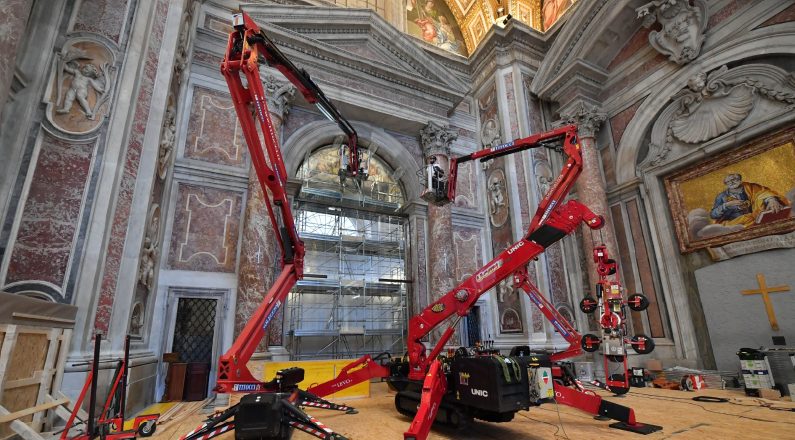(ZENIT News / Vatican City, 25.07.2024).- In the framework of the works planned for the forthcoming Jubilee, the Fabric of Saint Peter has initiated the substitution of the glass diaphragm that protects Michelangelo’s Pietà by a new glass, to guarantee adequate visibility parameters and security.
The exacting restoration works of the Pietà Chapel began on Monday, May 27and will conclude at the end of September 2024.

The new diaphragm, which will protect the Pietà, will include nine “shatterproof” and “bulletproof” [panels] of the highest quality and maximum transparency. Designed especially by a group of experts, it will be equipped with a high technology innovative anchoring system, carefully studied in each of its components for the best protection and enjoyment of the venerated and admired sculpture.
The objective of the project — conceived, carried out and offered as donation by a group of Piedmont businessmen and professionals of the sector –, is to return the Marian icon to the devotion of the pilgrims and all the visitors with the greatest possible visibility and security.
During this brief period of necessary blackout of Michelangelo’s marble sculpture, the plaster casting of Saint Peter’s Pieta, made by Francesco Mercatali between 1942 and 1943, will be exhibited in the Basilica.

Attack on Michelangelo’s Pietà
The attack on Michelangelo’s Pietà occurred on May 21, 1972 in Saint Peter’s Basilica in the Vatican. A man called Laszlo Toth, an Australian geologist of Hungarian origin with mental problems, attacked the sculpture with a hammer while shouting: “I am Jesus Christ, risen from the dead.”
Toth struck the sculpture fifteen times, seriously damaging the Virgin’s face, breaking her left arm and injuring the elbow of the work. The sculpture suffered significant damages, but thanks to a meticulous restoration process, the Pietà was able to be returned to its original state. Hence the reason for the protective glass, which is now being renovated in an improved way for the Jubilee.



